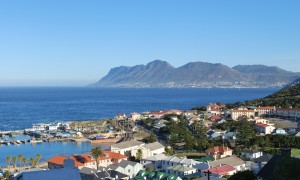CHAPTER < SIX - OCEAN OF LIFE CONTD....
 Approximately one trillion metric tons of carbon dioxide is dissolved in the ocean, with a colder ocean absorbing more carbon dioxide than a warmer ocean. Global warming could result in a significant increase in the mean sea temperature with more carbon dioxide being released into the atmosphere and less carbon dioxide being dissolved, which in turn would increase the greenhouse effect in a feedback cycle.
Approximately one trillion metric tons of carbon dioxide is dissolved in the ocean, with a colder ocean absorbing more carbon dioxide than a warmer ocean. Global warming could result in a significant increase in the mean sea temperature with more carbon dioxide being released into the atmosphere and less carbon dioxide being dissolved, which in turn would increase the greenhouse effect in a feedback cycle.
Studies of sea level around the world show that over the past century, the global mean sea level has risen by about 12 centimetres or slightly more than one centimetre per decade. It is believed that this could be due either to polar ice caps melting or to thermal expansion, whereby the upper layers of the ocean expand much like milk expands when heated, often overflowing the mug in which the cold milk was first measured. Either way, both scenarios point to global warming with a rising global sea level corresponding to changing trends in average global air temperatures.
 This could have a potentially disastrous consequence for millions of people around the world. Should global warming result in an average temperature rise of four degrees centigrade over the next 40 years, with sea levels correspondingly rising by 140 centimetres as was hypothesised at the “Changing Atmosphere” Conference held in Toronto in 1988, tens of millions of people living in river deltas and lowlands around the world would be forced to leave their homes and agricultural holdings. Most affected would be areas such as Bangladesh, some Pacific islands, the Netherlands, some Mediterranean cities especially Venice, the State of Florida in the United States and Alexandria.
This could have a potentially disastrous consequence for millions of people around the world. Should global warming result in an average temperature rise of four degrees centigrade over the next 40 years, with sea levels correspondingly rising by 140 centimetres as was hypothesised at the “Changing Atmosphere” Conference held in Toronto in 1988, tens of millions of people living in river deltas and lowlands around the world would be forced to leave their homes and agricultural holdings. Most affected would be areas such as Bangladesh, some Pacific islands, the Netherlands, some Mediterranean cities especially Venice, the State of Florida in the United States and Alexandria.
Methane is a gas that has 25 times the greenhouse strength of carbon dioxide. It is released when peat in the frozen tundra region thaws, when fossil fuels are extracted from the ground and when trees and vegetation are burnt during the destruction of tropical rainforests. It is also produced in swamps, landfills, municipal and industrial dumps, as well as sewage-treatment plants by methanogenic bacteria.
Rice paddy fields, termite mounds and intestinal “gas” from cows, also release methane into the air. Human activities from agriculture to garbage disposal have doubled methane concentrations in the atmosphere, but of greater concern in relation to the world’s ocean, are the methane hydrates found in the mud at the bottom of the Arctic Ocean and in the depths of ocean trenches. These deposits are held in the deep, dark depths by pressure from water above as well as the stability of cold water; cold water being more stable than warmer water. It is feared that if the temperature of the water in these ocean depths warmed in response to sea warming trends, these deposits could be released, further exacerbating the global warming scenario.
Ocean currents
 Ocean currents move in great surface spiral patterns known as gyrals, sweeping clockwise in the Northern Hemisphere and counter-clockwise in the Southern Hemisphere, with currents originating in the northern latitudes eventually arriving in Antarctica. In this way they are a significant transportation medium, circulating cool and warm water, chemicals and other matter around the globe, as well as redistributing heat, thereby profoundly affecting life not only in the ocean, but also on coastal lands.
Ocean currents move in great surface spiral patterns known as gyrals, sweeping clockwise in the Northern Hemisphere and counter-clockwise in the Southern Hemisphere, with currents originating in the northern latitudes eventually arriving in Antarctica. In this way they are a significant transportation medium, circulating cool and warm water, chemicals and other matter around the globe, as well as redistributing heat, thereby profoundly affecting life not only in the ocean, but also on coastal lands.
This oceanic circulatory system, together with atmospheric circulation, are the reasons why fallout material produced by aboveground nuclear testing as well as chemical insecticides and other toxins, have found their way into the bodies of far-off Antarctic wildlife. It is also the reason why cholera microbes defecated into the ocean, can be transported via algal blooms across thousands of kilometres of open sea, to finally infect a person eating contaminated seafood on the other side of the world.
The health of the ocean, its inhabitants and the people who live alongside it are dependent on a complex interplay of diverse factors such as global climate changes, population concentrations and practices, pollution, micro-organisms, atmospheric chemical concentrations, ozone depletion, solar activity, ultraviolet radiation increase and oceanic and atmospheric circulatory patterns. Humankind has always viewed the ocean of the world as enduring and everlasting. It has seemed to be the last stronghold of nature, imperturbable to the works of Man. However this is not true.
 As with each terrestrial biome on the landmasses of the Earth, we have made our presence felt in the sea. This has been felt through deadly, black oil-spills that coat the feathers of seabirds. In radioactive substances that cause cancers in sea mammals. In pollution that clouds seawater and clogs the gills of fish. In tin cans that are found at ocean depths. In sonar “noise” pollution from the military, commercial and recreational vessels that ply the shipping lanes of the world, drowning out the singing of whales and affecting their ability to feed, mate, detect predators and take care of their young. And in underwater nuclear testing which obliterates underwater habitats, killing valuable sea life.
As with each terrestrial biome on the landmasses of the Earth, we have made our presence felt in the sea. This has been felt through deadly, black oil-spills that coat the feathers of seabirds. In radioactive substances that cause cancers in sea mammals. In pollution that clouds seawater and clogs the gills of fish. In tin cans that are found at ocean depths. In sonar “noise” pollution from the military, commercial and recreational vessels that ply the shipping lanes of the world, drowning out the singing of whales and affecting their ability to feed, mate, detect predators and take care of their young. And in underwater nuclear testing which obliterates underwater habitats, killing valuable sea life.
All these factors and more have compromised the Ocean of Life, our ancient evolutionary birthplace and the evolutionary birthplace of all other life forms on Earth. What will our fate be, if we trash this planet’s mighty ocean beyond the point of its ability to recover? And how will we know when this point of no return has been reached? If we continue to blatantly disregard the health of the ocean, these could well be questions we will be forced to answer in our lifetime, when the sea of life becomes the sea of death. For our children’s children they could well be questions we attempted to answer too late…